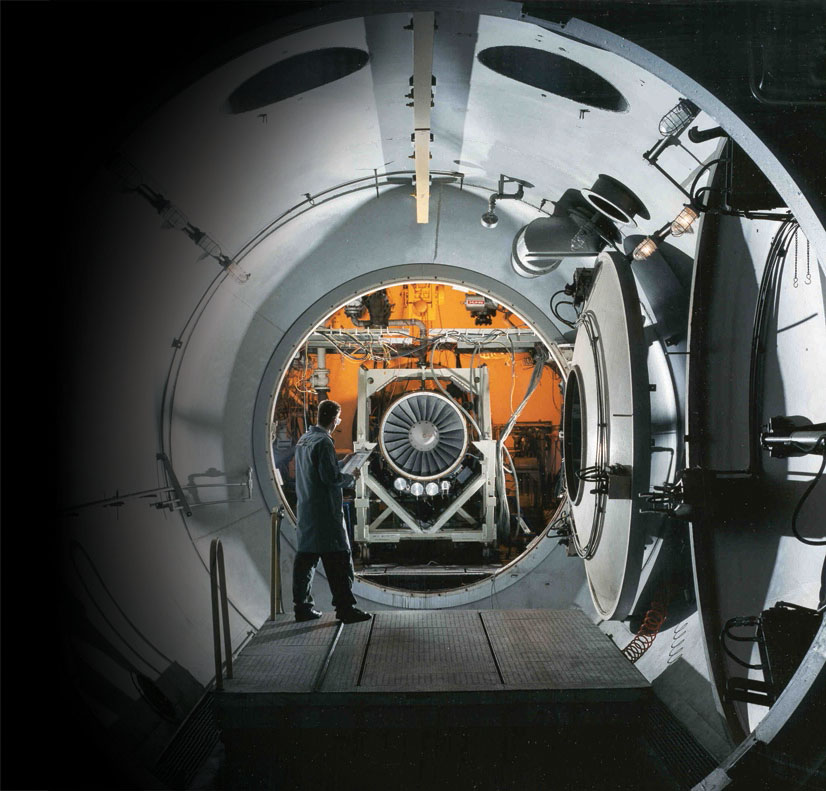January 26, 2012 — In 2007, the British-based company Rolls-Royce announced plans to build a new jet engine manufacturing plant at Crosspointe Centre in Prince George County, and invited the University of Virginia, Virginia Tech, Virginia State University and the Virginia Community College System to join it in an innovative partnership.
Plans included creation of two major research centers; support for faculty, students, workforce development initiatives and research; and manufacturing training. In support of the partnership, the Commonwealth of Virginia agreed to provide funds over a five-year period beginning in July 2009 to support chaired professorships, endowed graduate fellowships, endowed internships and lab renovations.
U.Va.'s School of Engineering and Applied Science, which had hoped to gain significant educational and research opportunities, is today reaping benefits from the partnership, Dean James H. Aylor said.
"We were excited in 2007 about the ways this partnership promised to benefit the Engineering School and we are very pleased with what it has already made possible," Aylor said. "It has fostered collaborations, provided critically needed support for research, faculty, graduate and undergraduate students and created an enhanced process for our students and faculty to move discovery from concept and design to product production."
He noted that the Engineering School is committed to preparing its graduates for leadership, increasing the impact of its research and expanding its reach. "The Rolls-Royce partnership has had a positive impact on all of these areas," he said.
Also, "The Rolls-Royce partnership has enabled U.Va. to attract more than $8 million in external research funding for projects associated with the partnership," said Barry Johnson, senior associate dean of the Engineering School.
The Rolls-Royce plant on the 1,000-acre Crosspointe Centre aerospace manufacturing campus was completed in early 2011. It is the first of three plants planned for the complex and will employ about 140 people. At full capacity, the plant will manufacture about 2,000 aircraft parts a year.
As part of the project, Harsha Chelliah, U.Va. professor of mechanical and aerospace engineering, and Srinath Ekkad, a mechanical engineering professor at Virginia Tech, are managing the Commonwealth Center for Aerospace Propulsion Systems, which is dedicated to advancing the boundaries of propulsion systems by exploring breakthrough concepts for creating more efficient and effective propulsion systems. In the three years since it was created, the center has gone from no funding to more than $2 million in research funding from Rolls-Royce, the commonwealth and federal grants.
Meanwhile, the 60,000-square-foot Commonwealth Center of Advanced Manufacturing, or CCAM, is under construction at Crosspointe on 20 acres provided by Rolls-Royce. This collaborative research facility will accelerate the transfer of laboratory innovations to manufacturing production lines. It was designed jointly by its member organizations and, when complete this September, will offer research scientists and doctoral students from U.Va., Virginia Tech and Virginia State University a world-class facility to develop and test products for a diverse set of industries, with a focus on surface engineering and manufacturing processes. Member companies currently include Canon Virginia, Chromalloy, Newport News Shipbuilding, Rolls-Royce, Sandvik Coromant, Siemens and Aerojet.
"CCAM has already generated more than $500,000 a year in external funding," Johnson said.
The Rolls-Royce partnership, with the support of the commonwealth, has also enhanced the Engineering School faculty and opportunities for graduate and undergraduate students. U.Va. provided support for eight faculty members; four have already joined the school – Eric Loth, mechanical and aerospace engineering professor and associate chair of aerospace engineering; associate professor Beth Opila in the materials science and engineering department; Patrick Hopkins, who received his bachelor's degree and Ph.D. in engineering at U.Va. and is now assistant professor in the mechanical and aerospace engineering department; and Gary Koenig Jr., assistant professor in the chemical engineering department.
Four more faculty members will be added in the next two years.
In addition, the commonwealth will invest $7.6 million to fund three new endowed professorships to develop curriculum and lead research efforts. Already, $6.3 million has been received, and the Engineering School is recruiting applicants.
An endowment to support doctoral students was established with $1.5 million from the commonwealth, with $1 million more expected this year. The awards will support up to four Ph.D. students in their research and scholarship for a minimum of three years. The first two recipients will be announced in February. The commonwealth also endowed an undergraduate international internship.
With $2 million from the commonwealth, a Rapid-Prototyping Laboratory that includes a student collaborative design space as well as numerous 3-D printers and computer numerical controller machines was constructed in the Mechanical and Aerospace Engineering Building. The Mechatronics Lab, under the direction of assistant professor Gavin Garner, was also expanded. The lab enhancements enable students to study design concepts one semester and build out their creations during a subsequent semester.
Other state funding is helping to develop K-12 teacher training and expanding sponsored research.
Media Contact
Article Information
January 27, 2012
/content/rolls-royce-partnership-generating-success-uva-engineers

